2025年には、汚染と健康への懸念の高まりにより、空気清浄機の需要が急増しています。この記事では、先進技術、主要な選択要因、規制遵守に焦点を当て、煙用空気清浄機市場の詳細な分析を提供します。空気清浄機市場をナビゲートするプロのバイヤーに貴重な洞察と支援を提供します。メインコンテンツに移り、購入の決定に影響を与える重要な側面を探ってみましょう。
目次:
– 煙用空気清浄機の市場概要
– 煙用空気清浄機市場の詳細な分析
– イノベーションと顧客の悩み
– 煙対策用空気清浄機を選ぶ際の重要な要素
– 煙用空気清浄機の先進技術
– 規制遵守と認証
– 煙の代替ろ過方法
– 産業用途における考慮事項
– まとめ
煙用空気清浄機の市場概要
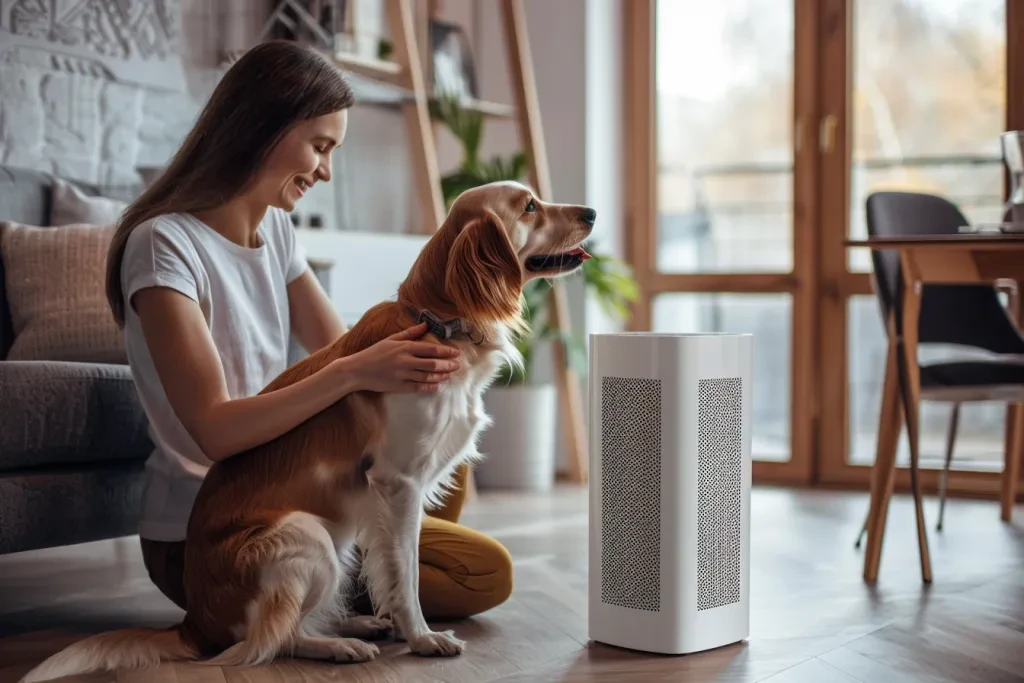
14.19年に2024億7.15万米ドルと評価される世界の空気清浄機市場は、年平均成長率21.50%で成長し、2030年までにXNUMX億米ドルに達すると予測されています。この成長は、空気の質の問題に対する意識の高まりと、喘息やアレルギーなどの呼吸器疾患の発生率の上昇によって推進されています。揮発性有機化合物(VOC)や悪臭などのガス状汚染物質を除去する高度な空気清浄機は、特に呼吸器疾患を持つ人々の間で人気が高まっています。
南北アメリカでは、健康意識の高まりと大手メーカーの存在により、市場が大きく成長しています。アジア太平洋地域では、中国、日本、韓国、インドなどの国々で急速な都市化と深刻な大気汚染問題が起こり、空気清浄機が家庭に欠かせないものとなっています。ヨーロッパでも、消費者の意識と政府の支援的な規制により、空気清浄機の導入が進んでいます。中東とアフリカも徐々に追いついており、都市部の汚染と経済発展が市場の需要を刺激しています。
煙用空気清浄機市場の詳細分析

産業および自動車の排気ガスによる汚染レベルが上昇しているため、煙用の空気清浄機の重要性が高まっています。これらのデバイスの主要なパフォーマンス基準には、粒子状物質 (PM2.5 および PM10)、VOC、およびその他の有害な汚染物質をろ過する能力が含まれます。高効率粒子状空気 (HEPA) フィルターと活性炭フィルターは、この分野で普及している技術であり、微粒子を捕らえて臭いを中和する効率で知られています。
市場シェアの動向を見ると、ダイソン、ハネウェル、フィリップスなどのブランドが革新的な製品と強力な流通ネットワークにより重要な地位を占めていることがわかります。新興市場での可処分所得の増加や都市化などの経済的影響により、需要が高まっています。消費者の行動は、特に汚染レベルの高い地域で、空気の質を優先する方向にシフトしています。流通チャネルは多様で、オンラインとオフラインの両方の販売が市場の成長に貢献しています。
最近のイノベーションには、AI や IoT などのスマート テクノロジーの統合が含まれ、リアルタイムの空気質監視と自動調整が可能になっています。空気清浄機の製品ライフサイクルは比較的長いですが、市場での存在感を維持するには、ろ過技術と設計の継続的な進歩が不可欠です。デジタル化と電子商取引も市場範囲の拡大に重要な役割を果たしており、消費者が幅広い製品に簡単にアクセスできるようにしています。
イノベーションと顧客の悩み
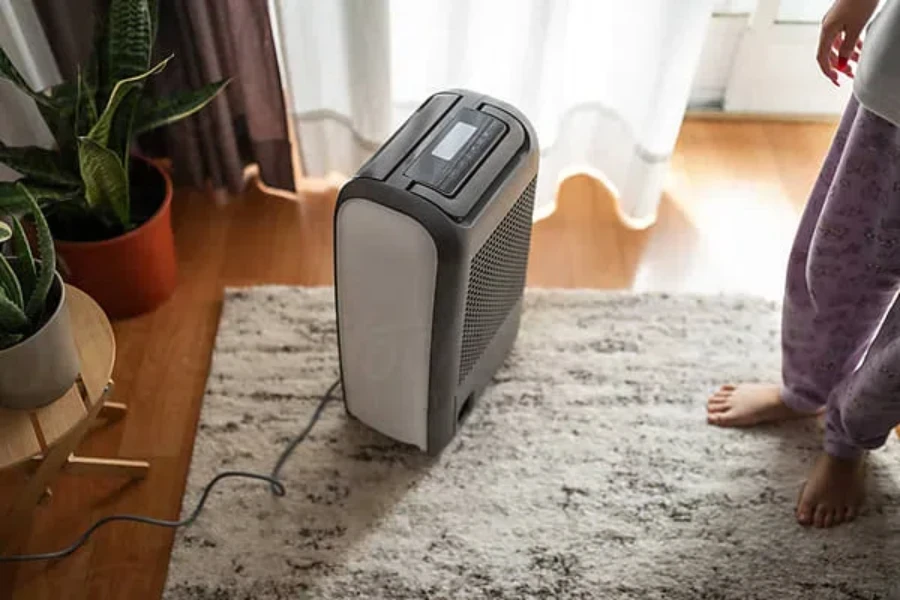
空気清浄機市場におけるイノベーションは、主に濾過効率とユーザーの利便性の向上に重点を置いています。たとえば、ポータブルおよび車載型空気清浄機の導入は、さまざまな環境における清浄な空気のニーズに対応しています。ダイソンの最近の空気清浄技術の進歩は、家庭内の空気の質の向上に重点を置いており、パナソニックのポータブル Nanoe X 車載空気清浄機は、自動車の空気清浄をターゲットにしています。
こうした進歩にもかかわらず、顧客の悩みは残っています。特に発展途上地域では、運用コストとメンテナンスコストの高さが潜在的な購入者を遠ざける可能性があります。特定のガス状汚染物質をろ過できないなどの技術的な制限も課題となります。しかし、HEPA フィルターや活性炭フィルターの革新が進むことで、これらのハードルが克服され、より効果的なソリューションが提供されると期待されています。
ブランドポジショニング戦略には、健康上の利点と技術的優位性の強調が含まれます。差別化戦略には、空気清浄と加湿やスマートホーム統合などの他の機能を組み合わせた多機能デバイスの提供が含まれます。煙やアレルゲンなどの特定のニーズに対応する空気清浄機などのニッチ市場も、多様な消費者の要件を満たすためにターゲットにされています。
煙対策用空気清浄機を選ぶ際の重要な要素
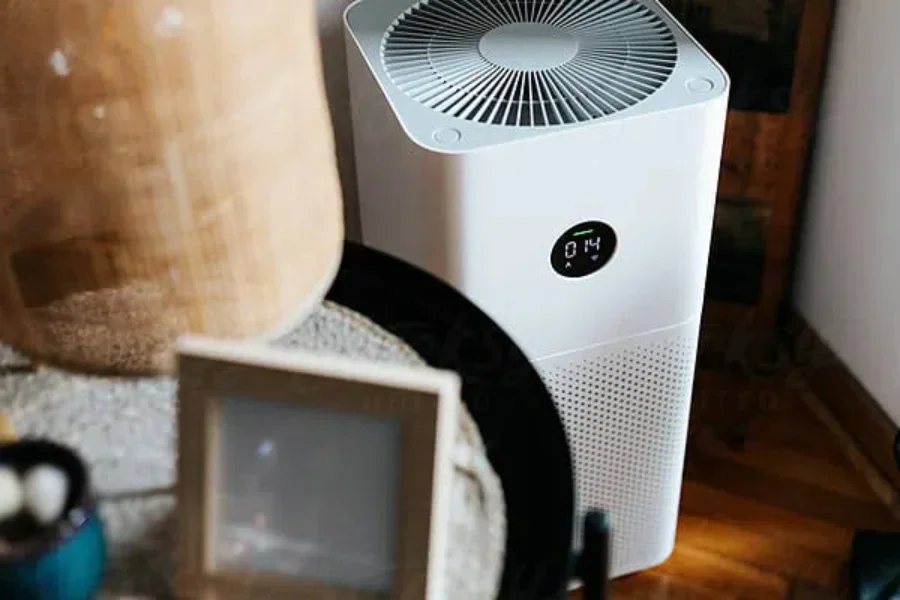
ろ過技術
煙用の空気清浄機を選ぶ際、ろ過技術の種類は非常に重要です。高効率微粒子空気 (HEPA) フィルターは、煙の粒子を含む 99.97 ミクロンの空気中の微粒子を 0.3% 捕らえることができます。医療施設で使用されていることからもわかるように、煙の除去に非常に効果的で信頼性があります。
活性炭フィルターも重要な技術です。表面積が大きいため、煙、臭気、揮発性有機化合物 (VOC) の吸着に優れており、煙の浄化には欠かせません。HEPA フィルターと活性炭フィルターを組み合わせることで、総合的な空気浄化が実現します。
電気集塵機は電気の力を利用して煙の粒子を引き寄せて捕らえます。効果的ではありますが、定期的なメンテナンスが必要です。マイナスイオンを放出して粒子を帯電させて沈降させるイオン発生装置も使用できますが、オゾンが発生する可能性があり、健康上の懸念があります。
サービスエリア
空気清浄機のカバー範囲は重要な仕様です。空気清浄機は、効果的に清浄できる最大面積によって評価されます。たとえば、500 平方フィートの部屋用に設計されたユニットは、性能を犠牲にすることなく、より広いスペースには適さない可能性があります。空気清浄機の容量を部屋のサイズに合わせて、最適な空気の質を確保してください。
空気清浄機が煙、ほこり、花粉を除去するために送り出すフィルターされた空気の量を測定する、清浄空気供給率 (CADR) 評価を検討してください。CADR 評価が高いほど、空気清浄機の効率が高いことを示します。煙の場合、広い部屋では 350 以上の CADR 評価が推奨されますが、小さな部屋では低い評価でも十分な場合があります。
また、空気清浄機が 4 時間以内に部屋の空気を何回清浄できるかを示す、XNUMX 時間あたりの空気交換回数 (ACH) の評価も考慮してください。煙の除去には、継続的な空気ろ過を保証する ACH 評価 XNUMX 以上が理想的です。
保守および運用コスト
空気清浄機を選ぶ際には、メンテナンスと運用コストが重要です。HEPA フィルターと活性炭フィルターは、使用状況や環境条件に応じて、通常は 6 か月から 1 年ごとに定期的に交換する必要があります。長期的な費用を評価する際には、交換用フィルターのコストを考慮してください。
一部の空気清浄機には、大きな粒子を捕らえる洗浄可能なプレフィルターが搭載されており、プライマリフィルターの寿命を延ばし、コストのかかる交換の頻度を減らします。電気集塵機も、性能を維持するために定期的な清掃が必要です。
エネルギー消費も考慮すべき点です。Energy Star 認定を受けた空気清浄機はエネルギー効率が高く、運用コストを削減します。さらに、一部のモデルでは、プログラム可能なタイマーやエコ モードなどの機能が提供され、エネルギーを節約できます。
騒音レベル
空気清浄機の騒音レベルは、さまざまな環境への適合性に影響する可能性があります。騒音は通常デシベル (dB) で測定され、値が低いほど静かに作動します。家庭やオフィスでは、50 dB 未満の騒音レベルが一般的に許容され、空気清浄機が日常の活動や睡眠を妨げないことが保証されます。
多くの空気清浄機は複数のファン速度を備えており、ユーザーは必要に応じて騒音レベルを調整できます。たとえば、日中は最大限の浄化効果を得るためにファン速度を高くし、夜間は静かに動作させるためにファン速度を低くすることができます。
一部の上級モデルには、絶縁モーターや空気力学設計などのノイズ低減技術が採用されており、音の出力を最小限に抑えます。ユーザーレビューや製品仕様をチェックして、さまざまな空気清浄機のノイズレベルを測定してください。
その他機能
最新の空気清浄機には、機能性とユーザー エクスペリエンスを向上させるさまざまな追加機能が搭載されています。Wi-Fi 接続を備えたスマート空気清浄機は、スマートフォン アプリを介してリモートで制御できるため、ユーザーはどこからでも空気の質を監視し、設定を調整できます。これらのモデルは、多くの場合、リアルタイムの空気の質の更新とメンテナンスのリマインダーを提供します。
空気質センサーは空気中の汚染物質の濃度を検出し、空気清浄機のファン速度を自動的に調整して最適な空気質を維持し、手動操作なしで効率的な動作を保証します。
他に検討すべき機能としては、フィルターの交換時期をユーザーに通知するフィルター交換インジケーターや、小さなお子様がいる家庭の安全のためのチャイルドロック設定などがあります。空気清浄機の中には、細菌やウイルスを殺す UV-C 光技術を搭載し、空気清浄をさらに強化するものもあります。
煙用空気清浄機の先進技術
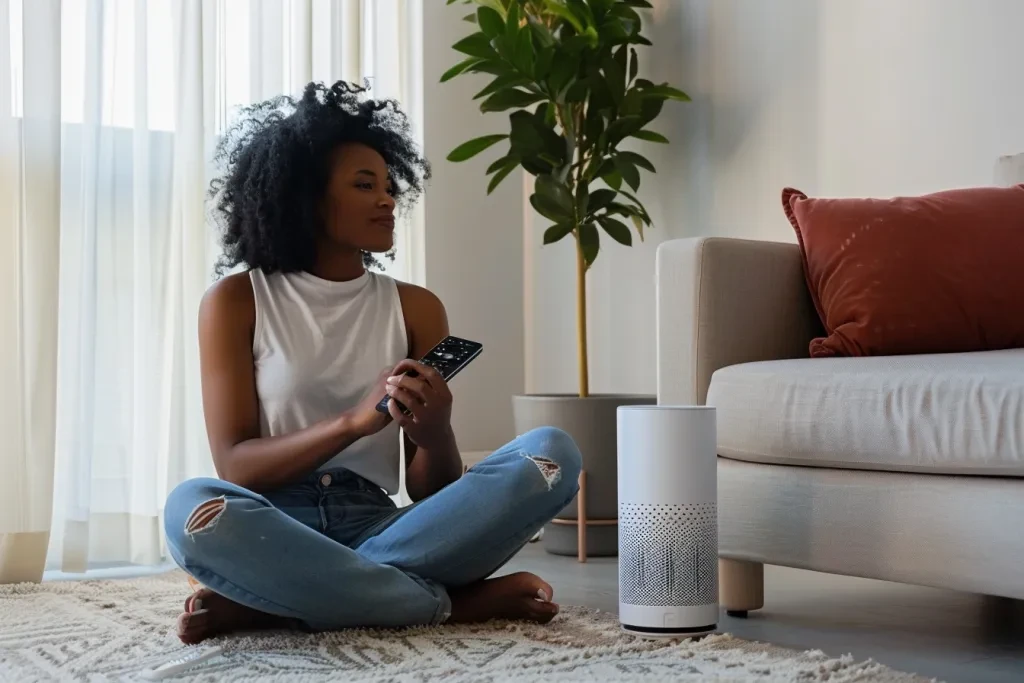
光触媒酸化 (PCO)
光触媒酸化 (PCO) は、紫外線 (UV) を使って触媒 (通常は二酸化チタン) を活性化し、ヒドロキシルラジカルを生成する高度な空気浄化技術です。これらのラジカルは、煙の粒子、VOC、その他の汚染物質を水や二酸化炭素などの無害な分子に分解します。PCO システムは、従来のフィルターでは除去できないものも含め、幅広い汚染物質の除去に効果的です。
PCO 空気清浄機は、山火事が発生しやすい地域の近くの住宅や業務用厨房など、煙や臭いが持続する環境で役立ちます。PCO システムでは、健康に害を及ぼす可能性のある副産物であるオゾンが生成されないことを確認してください。
PlasmaWaveテクノロジー
PlasmaWave テクノロジーは、水蒸気と結合してヒドロキシルラジカルを生成するプラスイオンとマイナスイオンを生成します。これらのラジカルは、煙の粒子、臭気、その他の汚染物質を分子レベルで中和します。PlasmaWave テクノロジーは、アレルゲン、化学蒸気、煙を分解するのに効果的で、総合的な空気浄化を実現します。
PlasmaWave テクノロジーを採用した空気清浄機は、住宅および商業施設の両方に適しています。化学薬品を使わない空気清浄方法を採用しているため、継続的に使用しても安全です。さらに、PlasmaWave システムは有害なオゾンを生成しないため、健康的な室内環境が確保されます。
ハイブリッドシステム
ハイブリッド空気清浄機は、複数の浄化技術を組み合わせて性能を高めます。たとえば、ハイブリッド システムでは、HEPA フィルターと活性炭フィルターを UV-C ライトとイオン化と統合します。この多段階アプローチにより、煙、バクテリア、ウイルス、臭気など、幅広い汚染物質が空気から効果的に除去されます。
ハイブリッド システムは汎用性が高く、煙の多い環境や厳しい空気品質基準が求められるエリアなど、特定のニーズに合わせてカスタマイズできます。包括的な空気浄化を提供しますが、システムが複雑なためコストが高くなる可能性があります。
規制の遵守と認証
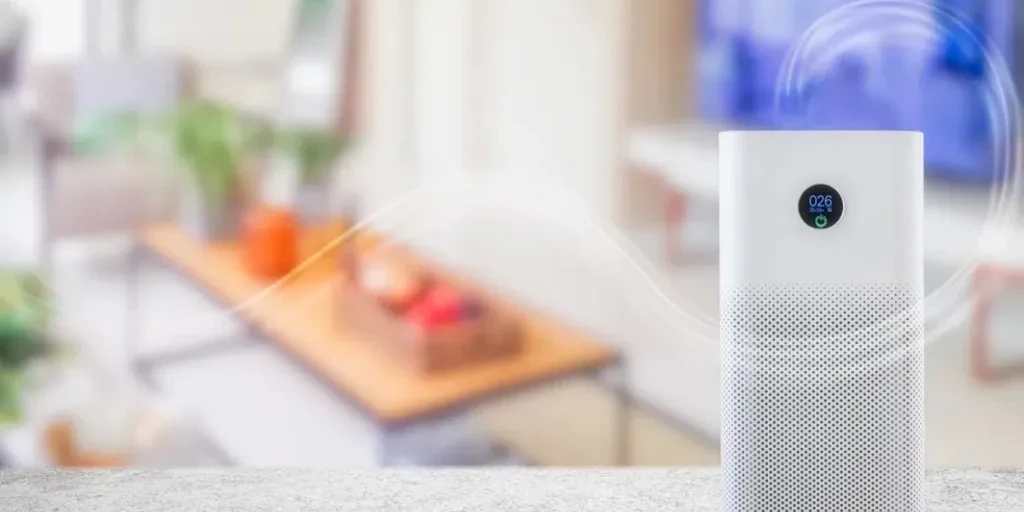
HEPAおよびULPA規格
高効率微粒子空気 (HEPA) フィルターと超低透過空気 (ULPA) フィルターは、その性能を保証するために厳格な基準が適用されます。HEPA フィルターは 99.97 ミクロンの粒子を少なくとも 0.3% 除去する必要がありますが、ULPA フィルターは 99.999 ミクロンの粒子を 0.12% 捕捉できます。これらの基準は、山火事の影響を受ける地域や工業地帯など、煙のレベルが高い環境で使用される空気清浄機にとって非常に重要です。
HEPA および ULPA 規格に準拠することで、空気清浄機は煙の粒子やその他の微細な汚染物質を効果的に除去できます。空気清浄機を選択するときは、HEPA または ULPA フィルターの認証を確認してください。
エネルギースター認定
Energy Star 認定は、空気清浄機が米国環境保護庁 (EPA) が定めるエネルギー効率ガイドラインを満たしていることを示します。エネルギー効率の高い空気清浄機は消費電力が少なく、運用コストと環境への影響を軽減します。電気料金が高い地域では、Energy Star 認定の空気清浄機を使用すると、長期的に大幅な節約が可能です。
空気清浄機を選ぶときは、パフォーマンスを犠牲にすることなくエネルギー効率の高い動作を保証するために、Energy Star 認定を受けたモデルを検討してください。この認定は、煙が持続する環境で継続的に動作するデバイスにとって特に重要です。
CARBコンプライアンス
カリフォルニア大気資源局 (CARB) は、特にオゾン放出に関して、空気清浄機の厳格な排出基準を定めています。CARB 準拠の空気清浄機は、屋内で安全に操作できるよう、オゾン濃度を 0.05 ppm 未満に抑える必要があります。オゾンは呼吸器系の健康に悪影響を及ぼす可能性があるため、家庭、オフィス、その他の人が集まる空間で使用する空気清浄機では、CARB 準拠が重要な考慮事項となります。
空気清浄機を選ぶ際は、特にイオン化やオゾンを生成する可能性のあるその他の技術を使用しているかどうか、CARB 準拠かどうかを確認してください。これにより、デバイスが安全基準を満たし、使用者に健康上のリスクをもたらさないことが保証されます。
煙の代替ろ過方法
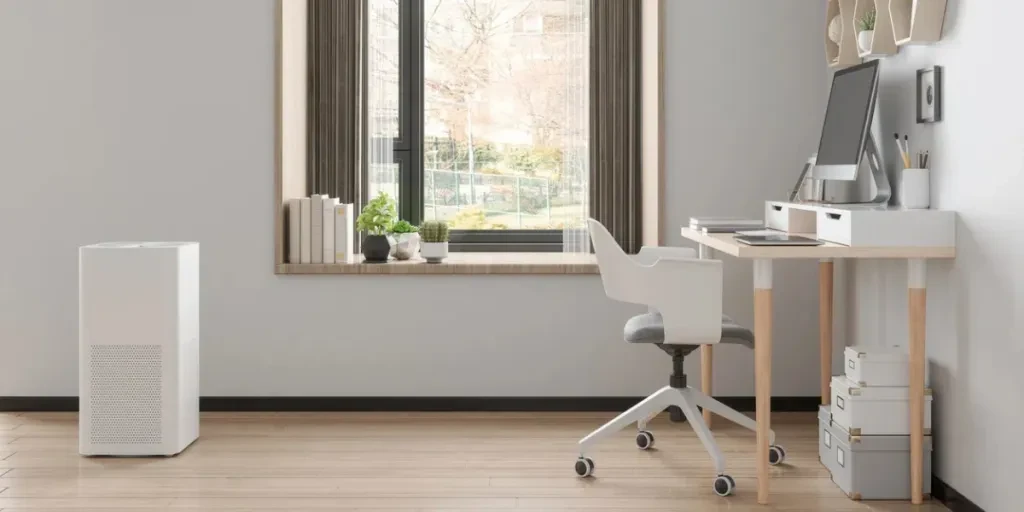
オゾン発生器
オゾン発生器は、煙や臭いを除去するために、一部の産業用途で使用されています。これらの装置はオゾンを生成し、煙の粒子と反応して中和します。ただし、オゾンへの曝露に関連する潜在的な健康リスクのため、オゾン発生器は住宅での使用には推奨されません。オゾンは呼吸器系を刺激し、喘息などの症状を悪化させる可能性があります。
産業環境では、オゾン発生器は適切な換気のある人がいない場所で使用すると効果的です。安全ガイドラインに従い、オゾン レベルが推奨制限を超えないようにしてください。
紫外線殺菌照射(UVGI)
紫外線殺菌照射 (UVGI) は、UV-C 光を使用して微生物の DNA と RNA を破壊し、細菌やウイルスを効果的に殺します。UVGI は主に殺菌に使用されますが、煙の粒子やその他の汚染物質の分解にも役立ちます。UVGI システムは、追加の浄化層を提供するために空気清浄機に組み込まれることがよくあります。
UVGI は、病院や研究室など、高い空気品質基準が求められる環境に適しています。UV-C ライトが空気清浄機内に適切に封じ込められ、居住者への曝露が防止されるようにしてください。
マイナスイオン発生器
マイナスイオン発生器はマイナスイオンを放出し、煙の粒子に付着して凝集させ、空気から落下させます。これらの装置は空気中の煙の粒子を効果的に減らすことができますが、副産物としてオゾンも生成する可能性があります。マイナスイオン発生器は、空気浄化を強化するために他のろ過方法と組み合わせて使用されることがよくあります。
マイナスイオン発生器を使用する場合は、オゾンレベルを監視し、適切な換気を確保してください。地下室や密閉された空間など、空気の流れが制限される場所での煙の削減に役立ちます。
産業用途における考慮事項

大容量空気清浄機
産業環境では、大量の煙や汚染物質を処理するために、大容量の空気清浄機が不可欠です。これらの清浄機は、多くの場合、立方フィート/分 (CFM) で測定される大量の空気の流れを処理するように設計されています。産業用空気清浄機は通常、HEPA フィルターや活性炭フィルターなどの堅牢な濾過システムを備えており、徹底した空気浄化を実現します。
大容量の空気清浄機は、工場、倉庫、煙や空気中の汚染物質が蔓延しているその他の広い空間での使用に適しています。信頼性の高い空気浄化を提供し、安全で健康的な作業環境の維持に役立ちます。
電気集塵機
電気集塵装置 (ESP) は、煙などの微粒子を空気から除去するために、工業用途でよく使用されます。ESP は電荷を使用して粒子を収集プレートに引き寄せて捕集します。効率性が高く、圧力低下を最小限に抑えながら大量の空気を処理できます。
ESP は、集塵プレートを清掃し、性能を維持するために定期的なメンテナンスが必要です。製造施設や発電所など、煙が継続的に発生する環境に最適です。
カスタム濾過ソリューション
特殊な産業用途では、特定の空気品質の課題に対処するためにカスタムろ過ソリューションが必要になる場合があります。カスタム システムは、HEPA、活性炭、UVGI、静電集塵などの複数のろ過技術を組み込むように設計して、最適な空気浄化を実現できます。
プロの空気品質コンサルタントと協力することで、独自の産業環境に最適な濾過ソリューションを特定できます。カスタム システムは、規制要件を満たし、作業者の安全と健康を確保するように調整できます。
煙対策に適した空気清浄機を選ぶには、濾過技術、カバー範囲、メンテナンス費用、騒音レベル、追加機能など、さまざまな要素を考慮する必要があります。光触媒酸化 (PCO) やプラズマウェーブなどの高度な技術により空気清浄を強化でき、規制への準拠により安全性と効率性が確保されます。産業用途では、大容量の空気清浄機、電気集塵機、カスタム ソリューションが信頼性の高いパフォーマンスを提供します。これらの要素を評価することで、煙を効果的に除去し、環境内の空気の質を向上させる空気清浄機を選択できます。





 বাংলা
বাংলা Nederlands
Nederlands English
English Français
Français Deutsch
Deutsch हिन्दी
हिन्दी Bahasa Indonesia
Bahasa Indonesia Italiano
Italiano 日本語
日本語 한국어
한국어 Bahasa Melayu
Bahasa Melayu മലയാളം
മലയാളം پښتو
پښتو فارسی
فارسی Polski
Polski Português
Português Русский
Русский Español
Español Kiswahili
Kiswahili ไทย
ไทย Türkçe
Türkçe اردو
اردو Tiếng Việt
Tiếng Việt isiXhosa
isiXhosa Zulu
Zulu